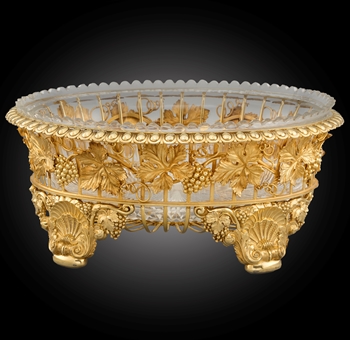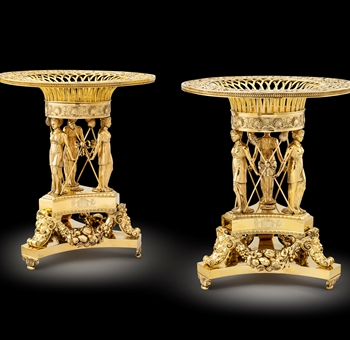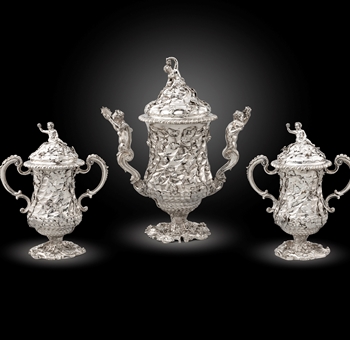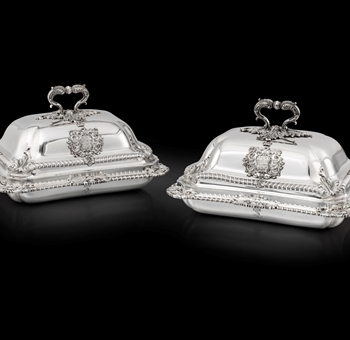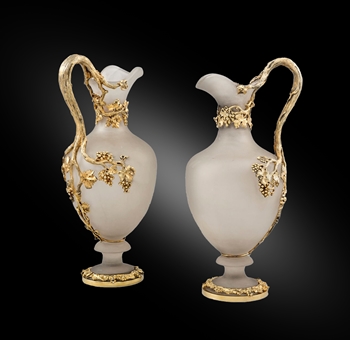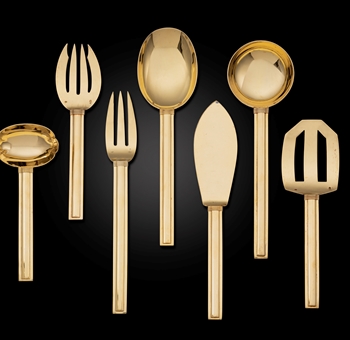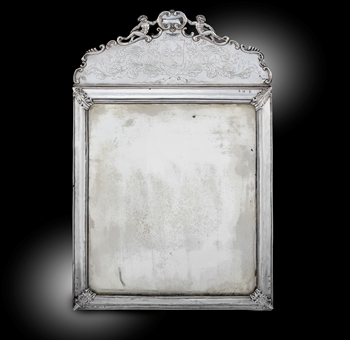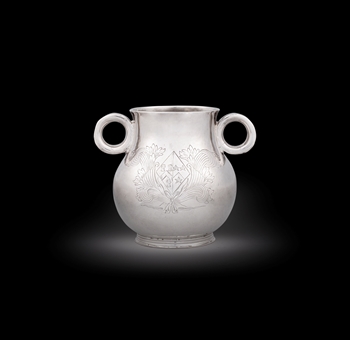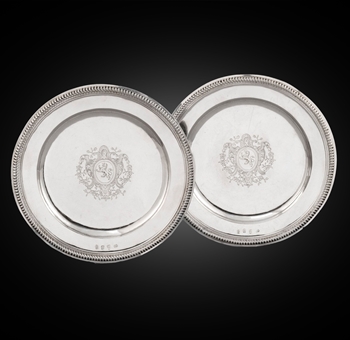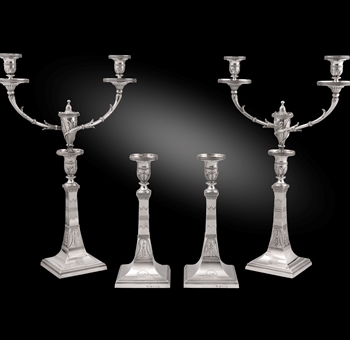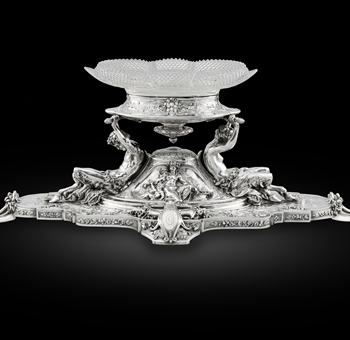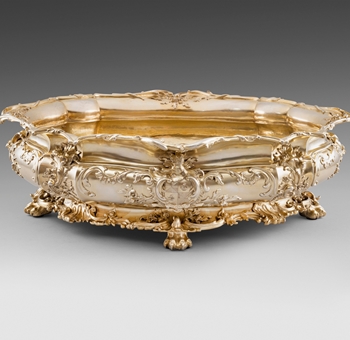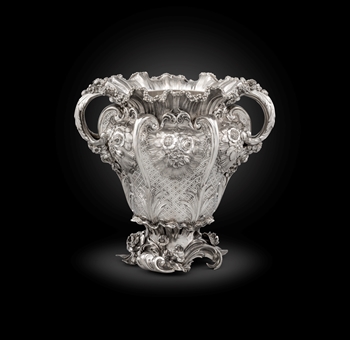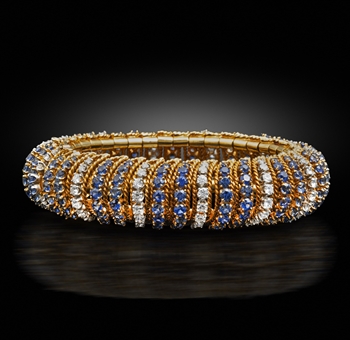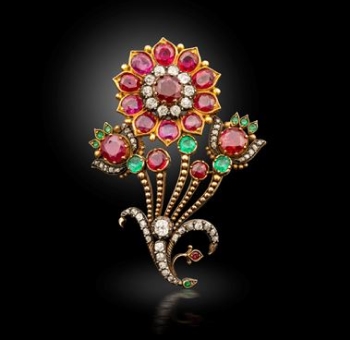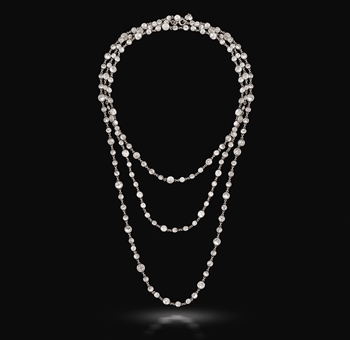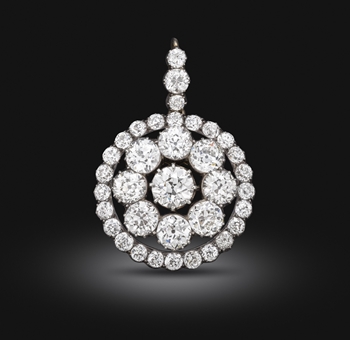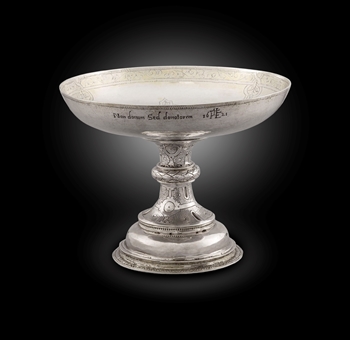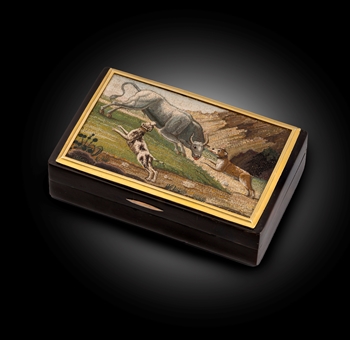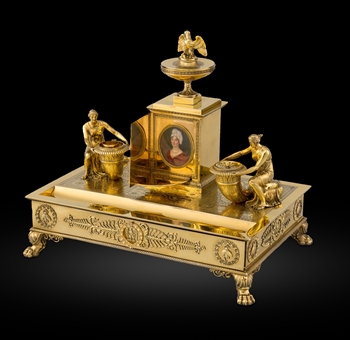Neo-Classical Candlestick Design:
The design for these monumental neo-classical candelabra derives from a form conceived in the 18th century by Robert Adam (1728-1792), one of the greatest proponents of the neo-classical style. Although largely known today for his architecture and interiors, Robert Adam's and his brother James's contribution to the design of silver is known through a series of 114 works amongst the nine thousand Adam drawings at the Sir John Soane's Museum, London, which are discussed in depth by Michael Snodin in his article 'Adam Silver Reassessed', The Burlington Magazine, January 1997, pp. 17-25.
The silversmith Richard Cooke has simplified the Adam design with the upper section of the stem kept plain, rather than spirally fluted and the upper collar of acanthus foliage has been omitted. Snodin explains in his 1997 article that Adam’s design was revolutionary, given that Adam’s earlier designs for silver drew more directly from ancient forms and motifs. He states that,
'The ancients did not, of course, have candlesticks, so Robert Adam, who made the sketch design, was in effect obliged to invent a new type. For the stem he reunited the bulbous baluster of the renaissance with its ancestor, the great stone candelabrum of the Romans. The spool-shaped base has no precedent in classical candelabra or Renaissance candlesticks, but is directly derived from the forms of the lids and bases of cups… Also innovatory is the relief ornament which covers the whole candlestick, recalling in its scale and density that on renaissance bronzes.'
The form proved to be highly influential, and many similar forms developed from the original concept. Other respected 18th century silversmiths employed it, including John Scofield, Sebastian and James Crespell, Daniel Smith and Robert Sharp and Thomas and William Pitts. The Birmingham silversmith Matthew Boulton also produced his own interpretation of the neo-classical baluster form. The dissemination of the design is further illustrated by a pen and grey wash design for a neo-classical candlestick, which comes from a group of drawings signed or inscribed RM acquired by the Victoria and Albert Museum. The design, which was acquired from the dealer Robert Jackson in 1878, is illustrated in Hilary Young's article, 'Neo- Classical Silversmiths’ Drawings at the Victoria and Albert Museum', Apollo Magazine, vol. 129, no. 328, June 1989, pp. 384-388, fig 9 and 10. It shows a similar simplification of the original Adam design used by Richard Cooke in his interpretation of the form.
John Heathcote (1767-1838)
Born in 1727 he was the only son of John Heathcote (1727-1795) of Conington Castle, co. Huntingdon and his wife Lydia (d.1822), the daughter of Benjamin Moyer. His father commissioned Thomas Gainsborough to paint his son and heir around 1771. The charming portrait, which shows the boy dressed in a white tunic like dress with a blue silk sash as was the fashion of the time, is now in the collection of the National Gallery of Art, Washington D.C. Heathcote was educated at Queen's College, Cambridge. He later served as M.P. for Gatton in Surrey from 1796 until 1798, having been selected for this seat after his cousin, Sir Gilbert Heathcote, 4th Bt. (1773-1851) had to turn it down, having been selected for a seat in Lincolnshire. In 1798 he became M.P. for Ripon until 1806.
He improved his estates at Conington Castle and restored the house, no doubt commissioning the present candelabra for his newly completed dining room. He inherited his mother's estates in Essex upon her death in 1822. On his death his eldest son John Moyer Heathcote (1800-1892) inherited his Conington estates and his second son Robert Boothby Heathcote (1805-1865) the lands in Essex. The family remained at Conington until the Second World War when the house was occupied by the Red Cross. The family demolished much of the building in 1955.
No record of apprenticeship of freedom. Only mark entered as plateworker, 28 June 1799. Address: 29 Carey Street, 14 January 1805. His work, which has survived in reasonable quantity, shows a high standard and he probably supplied one of the leading retailers, Rundell and Co. or Jeffreys, Jones and Gilbert. Most frequently met with are tea-sets and entree-dishes, with some good, covered cups of semi-classical inspiration. His work is always of exceptional quality and gauge.
You May Also Like




